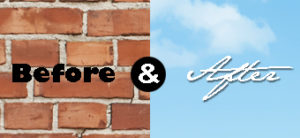You can search for ideas, or let them find you.
Creativity can be an active process. You look for a new idea, and, BAM! you find a new idea.
Or you don’t.
Active, yes. Exact, no. Yes, people can force ideas to come. We do it all the time in our brainstorming sessions. And, today, with deadlines shorter than a Kardashian marriage, often you have no choice but to force creativity. But in many ways, the more you force, the more likely the ideas become, well, forced.
The greatest thinkers since the beginning of time were active creators, to be sure. But they were also passive creators. To put it in sports terms, “they let the game come to them.”
This passiveness is hardly an inert state, it’s a highly alert state, a state of o p e n n e s s. It’s where you don’t have to look for ideas, just be open to them when they arrise.
Then there’s c o m p l e t e o p e n n e s s, a place where highly realized creative people are not only open to anything, but they’re open to things that may be diametrically opposed to any preconceptions they hold.
Basic o p e n n e s s
This is easy to explain. Many songwriters exemplify this degree of openness. Mark Knopfler of Dire Straits overhears some delivery men talking about him, “He gets his money for nothing and his chicks for free.” Voilà! A song is born. Hell, they even wrote some of the verses, “We got to install microwave ovens, custom kitchen deliver-i-e-e-s-s…”
Adam Levine of Maroon 5 is frustrated that the execs at the label are telling him he still hasn’t written the “radio hit,” the song with the big hook, for M5’s first CD release. He’s pissed, his creativity is being stifled by a bunch of freaking suits, he’s suffocating, he’s… wait! “It’s getting harder and harder to breathe..” M5’s breakout hit “comes to him” in the key of E-ureka!
Most of this blog is about active creativity. Coming up with ideas. But if simply being open to inspiration also works, shouldn’t we be, well, open to that. Maybe we should be more than open.
C o m p l e t e o p e n n e s s
The stealth bomber is a high-altitude example of this over-the-top kind of openness to ideas that may actually oppose the very foundation of our beliefs.
This amazing aircraft, which is still quite leading edge years after its introduction, utilized a lot of active creativeness in its development. But in the book Skunkworks, the authors point out the key idea that made it all come together, and how it came from an example of this c o m p l e t e o p e n n e s s.
Yes, the stealth bomber had a unique radar-deflecting shape. Yes, it employed an advanced radar-absorbing compound on the exterior. Yes, they stretched out the exhaust outlet to a comparatively razor-thin shape to lower the plane’s heat signature. But it was still not invisible to radar.
Until…
Until a rocket scientist went against all of his propellor-headed instincts and let go of perhaps the most fundamental of precepts that directs his thinking from the moment he gets up every morning until he rests his rocket-scientist-filled head down on his pillow at night. Until he went to that c o m p l e t e o p e n place that not only allows you to see things right in front of you, but enables you to see things beyond the barrier of your most staunch beliefs.
Rocket scientist live for speed. This rocket scientist was no different. But when he thought that perhaps the answer to being complete complete stealth might be achieved by slowing the plane down. B A M ! ! He found the solution.
He didn’t have to create anything.
He didn’t have to just be open to something new.
He had to be open to something that went against all of his instincts, knowledge and training.
We have a thinking technique called 180° Thinking (TM), that my fellow Before & After creative coaches and I use in almost all of our brainstorming sessions. This surprisingly basic method of creative thinking simply goes against conventional wisdom. We often find many fresh ideas this way. But we usually find even more fresh ideas towards the end of each brainstorming session, when we take the worst ideas from our other non-180° rounds of ideating and are simply o p e n to the wisdom that might be stealthily hidden in the logic of that made these ideas seem like bad ideas initially. See my previous post “When bad ideas are close to brilliant.”
Think of all the real inspiration you pass up everyday because you’re just not open to it, because it just don’t feel good, or right, or appropriate. Well, maybe most of the ideas that might result are bad, wrong or inappropriate. But maybe some aren’t. Are you so overflowing with ideas that you’re not willing to be open to a gift from the creative Gods?
I didn’t think so.
Tom Monahan is Head Creative Thinking Coach at Before & After, Inc. Since 1993 B&A has been conducting precept-shattering training in the area of creativity and problem solving, as well as high-output brainstorming sessions at some of the greatest companies and ad agencies in the world, among them Target, Virgin, Novartis and Unilever
© 2012 Tom Monahan, Before & After, Inc.

